|
|
 |
Iraq, to Mesopotamia |
|
The journey to Iraq was a package tour organized by a French agency.
It was part of a programme of visits to the Middle-East to discover
the roots of Christian Western and the Moslem Worlds.
The group was composed of 25 people. A French guide, a specialist in
Mesopotamia, accompanied us.
The tour was made in 1990, from May 17 to May 26. After an Air France flight,
and arrived in Baghdad on time.
The report is in seven tables. The general comments are given by the
Iraq presentation. |
|
|
|
|
Nadjaf |
|
|
|
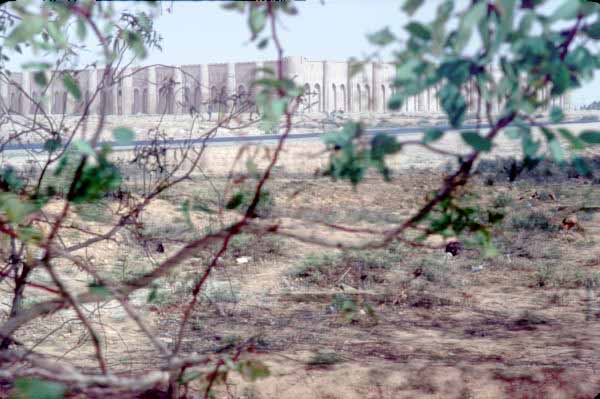 |
|
El Ukhaydir |
 |
|
Kufa |
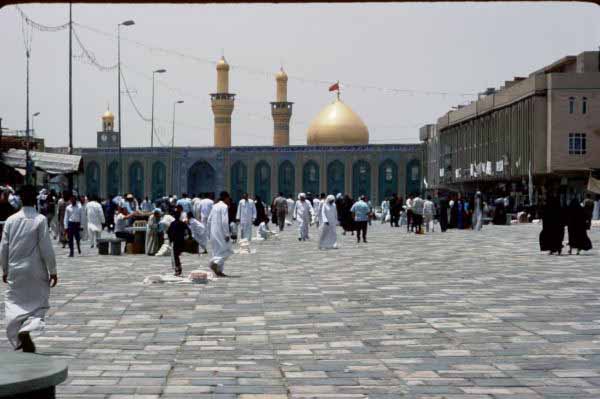 |
|
Nadjaf |
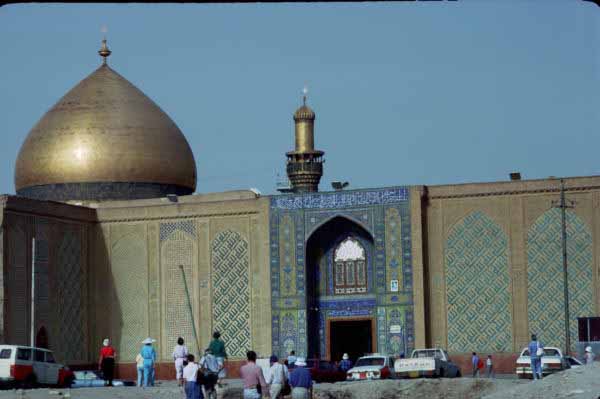 |
|
Kerbala |
|
|
Approach: The Air France flight lasted 5 hours 55 from Paris to
Baghdad with a stop in Istanbul. It took off at 4:50 pm from Paris
to arrive 10:45 pm (Paris time) at the international airport of
Baghdad. The immigration and customs formalities went
smoothly. I must mention that we were to show a non-Aids certificate.
The hotel was located at Hilla, 60Km from Baghdad, where we arrived
around one hour a.m. i.e. 3 a.m. local time. We used a private
air-conditioned bus for the whole of the journey.
El Ukhaydir: This castle was built in the middle of the desert at
an unknown date. It may have been built at the beginning of the Abbasid empire.
Surrounded by a rectangular wall reinforced by steps, it is built out of stones
bound with mortar.
Kufa: The city was founded at the beginning of the Arab
conquests in 618. It is in the Great Mosque that Imam Ali was
assassinated in 661.
Nadjaf: The Holy City of the Shiite where the sanctuary of
Imam Ali is decorated with a splendid dome and two minarets. The
city has many Koran schools, Madrassa. Each year, several
thousand Shiite pilgrims go there.
Kerbala: The city was the witness of events whose consequences
still have an impact on the life of the Iraqis and the relations with Iran.
In 680 AD, the Tuff battle saw the decisive showdown between Umayyad
and the partisans of Imam Ali during which Imam Hussein and his brother Abbas
were killed. The two sanctuaries located at Kerbala are remarkable for their
Iwan giving access to the room of prayers, the two minarets and the mosaics.
|
|
|
|
|
|
The first day was devoted to the discovery of the fight between the partisans
of Imam Ali and the Umayyad of Damascus which ended by the birth of Shiism,
a heresy of traditional Islam referring to Sunna, Sunnism.
Islam was propagated with weapons in hand not without internal
fights and assassinations. It should be remembered that the Islamic
religion is the product of a tribal age of the desert whose activity
apart from nomadism and caravans, was Raids to plunder as well as
to seize women. The Koran, alleged by uncreated, is only a
legislative code fro nomads. |
|
|
|
|
Ur, Uruk |
|
|
|
|
Approach: The night was spent in Nasiryah.
Marshes: This area is the result of the withdrawal of the sea
from Shatt Al-Arab over approximately 150Km. We visited the fishermen's
villages of Chibayish and Qurna, which may be the Eden of
the Genesis.
The dwellings are huts made of reeds posed on small islands of
ground and the streets are channels. The houses, on the Sumerian
time, model consist of the assembling of reeds in rolls
taking the shape of a perfect warhead, covered with carpets of
braided reeds and open-type screens for ventilation.
They are lake cities like on lake Titicaca or lake Inle. The
differences lie in the altitude, on the sea level, and in material,
the reed.
Ur: The Sumerian city whose name means "bitumen hill", is
called "Chaldean Ur" by the Genesis (XI, 31). The fatherland of
Abraham, it was one of the most prestigious cities in the 5th millennium BC.
A Ziggurat was a religious building which had a temple in its top dedicated
to a divinity. The burial mound was explored by Woolley in 1927. The funerary
objects are exposed at the Museum of Baghdad.
The palace and the tombs were visited. Seen from the summit of the Ziggurat the city
spreads on a large area surrounded with a thick raw brick wall partly eroded.
Uruk: The site is one of the most famous cities of Iraq. It was
inhabited without stopping as of 4000 BC until the 5e century AD. Built
on the bank of Euphrates, the site, called Warka, is now 12Km away
from the river after its course had changed with the time. Tablets
inscribed with cuneiform writings state that the ramparts were set up in 4700
BC by king Gilgamesh, the hero of the eponym epopic. The most remarkable building
is the 16-meter high Ziggurat. Beside the Ziggurat, a temple
is remarkable for its walls decorated with thousands of coloured clay cones.
The most famous object is the white "Marble Head of
a Woman" from Warka exhibited at the Museum of Baghdad. |
|
|
|
|
|
|
|
The sites of Ur and Uruk are not very far from each other but the trip
requires approximately one hour and a half. Out of raw bricks, they are
eroded in large parts. On the other hand the excavations have dug out
various levels of dwellings with archaeological objects of great value
for the knowledge of these ancient civilizations. The most interesting artefacts
discovered at the time of the excavation of the sites are exhibited at Baghdad Museum.
The statuettes, of the "orants, adoring" as well as the representation of
god Abu and his goddess, are made of veined gypsum with shells inlays with bitumen as eyes.
They are among the most representative of Sumerian art.
|
|
|
|
|
Babylone, Kish |
|
|
|
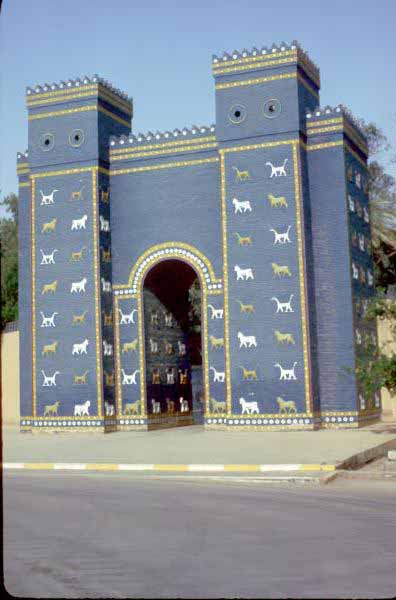 |
|
Ishtar gate |
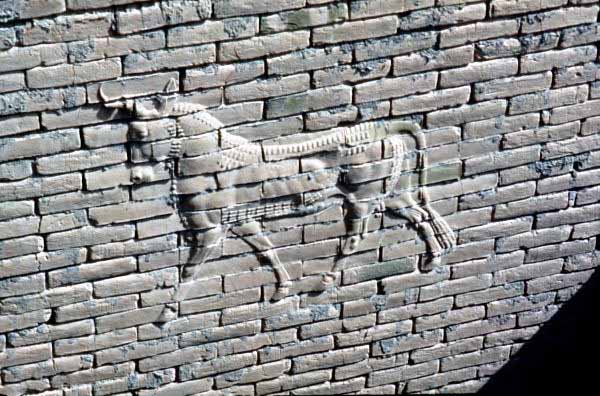 |
|
Wall |
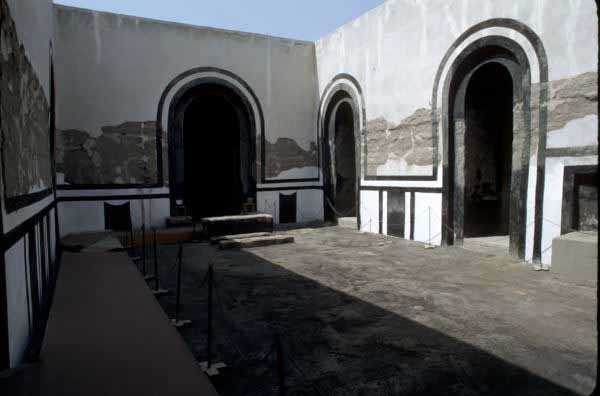 |
|
Nabu
Temple |
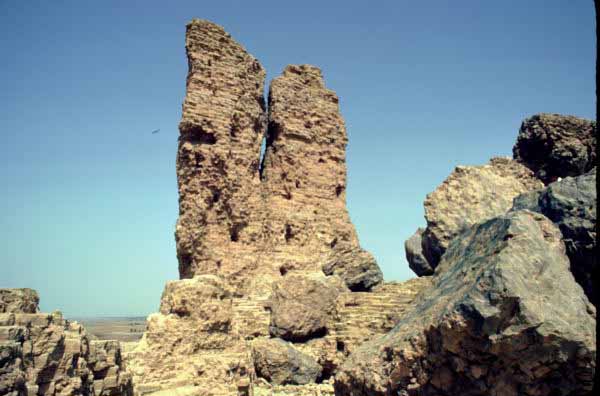 |
|
Borsippa |
|
|
Approach: The night was spent at Hilla to be close to the sites we
were to visit the next day.
Babylon: A legendary city of ancient history, Babylon occupies a great
place in the Bible and the writings of travellers and historians,
for example Herodote. The walls and the hanging gardens were among the seven
wonders in the old world. The city took its rise at the time of king Hammurabi
(1792-1750 BC), then declined under the pressure of other Cities-States of the area to
reappear under Nabuchodonosor (605-563 BC).
Alexander the Great made it his capital and died
there in 322 BC back from India.
The site has been heavely restored. We entered through the Marduk gate and
visited successively by walking the processional way:
Ninmah Temple:The temple was entirely rebuilt.
Ishtar Temple: One of the main temples of the site.
Its plan is identical to the others, a gate flanked by two
towers opening on a yard then into an anticella then the cella
where the statue of the honoured divinity stood.
Nabu Temple: Built on a similar plan, it is characterized by the yard
covered with bitumen. The walls of the cellas and yards are covered with plaster and bitumen.
Ishtar Gate: It is
located below the processional way and has kept the traces of its old decorations
in the shape of bulls and dragons. A great part of it was transported to Berlin
before World War I. A reconstitution was made in situ.
The Hanging gardens are a myth to some extent. In reality, they may
be the terraces of the gigantic warehouses which may have been
set up in pleasure gardens.
Kish: The city, called "the Red", the colour of the brick
of the Ziggurat, was the capital of Sargon (2334-2279 BC) king of Akkad.
The site is important in the mythology of Mesopotamia, the inhabitants believed
that, after the Flood, the king went down from Heaven.
Borsippa: The site was the place of worship of god Nabu, son of Marduk
the Great Babylonian god. A structure 47 m high is the vestige
of a seven-storied ziggurat. At the top, the bricks of green dark
colour and embossed may be the consequence of the fall of a comet
having caused the fusion of materials... according to some
scientists! |
|
|
|
|
|
The ziggurats dominated the lowlands between the rivers with their enormous
masses. This religious building is the bond between the sky and the
ground, the crossing point where the ways from the Heaven converge to
the Abyss. The construction is a succession of terraces that end
in a temple dedicated to a divinity. About thirty specimens are left today.
The Tower of Babel, Genesis (11, 1-9), is no other than the ziggurat of
Babylon, Etemenanki. The site, 91x91 meters, has been identified and
the inscriptions deciphered but difficult to interpret. No vestige of
the building remains.
|
|
|
|
|
Samara |
|
|
|
|
Approach: The principle of transfer was again respected by bringing
us closer to the visits to be made the next day. The night was spent in an
international standard hotel in Baghdad. The departures were always
early in the morning, this one was at 7:30 a.m.
The crossing of the suburbs of Baghdad highlighted the effort of
development, construction of industrial complexes and heavy traffic
of trucks and machines.
Samara: The city was founded in 836 AD by Abbasid Caliph Al-Mu'tasim,
but it expanded under Caliph Al-Mutawakkil (847-861). In 892, Caliph Al-Mu'tadhid
transferred the Abbasid capital to Baghdad.
Ma' shouq palace: In the north-west the palace of the "beloved"
was built by Al-Mu'tadhid out of bricks on a high platform with arches supporting
the roof. A spiral staircase leads up to the rooms decorated with clay arabesques.
Al-Mu'tasim palace: Built by Al-Mu'tasim overlooking the
Tiger, there is nothing left but three iwans called "the Gate
of the common people". Indeed the Caliph sat down there to listen to
the complaints of his people.
Great Mosque: It is the largest mosque in the Arab world built
of bricks and clay in 852 by Al-Mu'tasim. Rectangular, it measures
240m by 160 meters. The walls are 10 m high and 2,65 meters wide.
The spiral minaret stands up outside the building.
Abu Duluf mosque: Built by Al-Mu'tadhid, it is a ruined small-scale
model of the former.
Askari sanctuary: The tomb of two Imams, Ali Al-Hadi and his
son Hassan Al-Askari is crowned by a dome covered with gold as well
as the two minarets 36 meters high.
Ashur: The city was the first capital of the vast Assyrian empire, a great
people of warriors who became the "torturer" of the Middle East by
controlling his neighbours. The present city, Qalat Shergat, is located on the western
bank of the Tiger. The old city was built on a headland protected by a rampart.
The access is made through the Illat gate. Two buildings are still visible,
the ziggurat and the temple of "the Universe" as well as ruined palaces.
The ziggurat is reduced to an immense heap of raw bricks. |
|
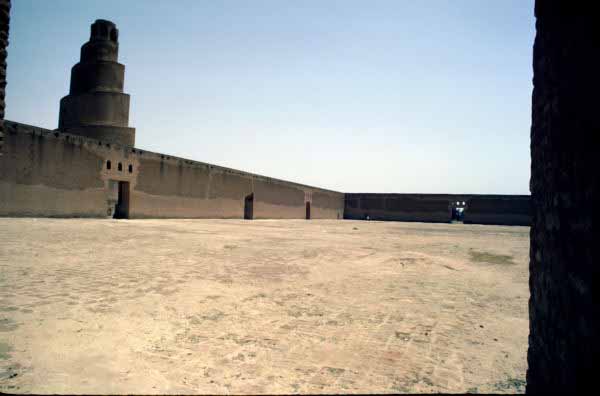 |
|
Samara |
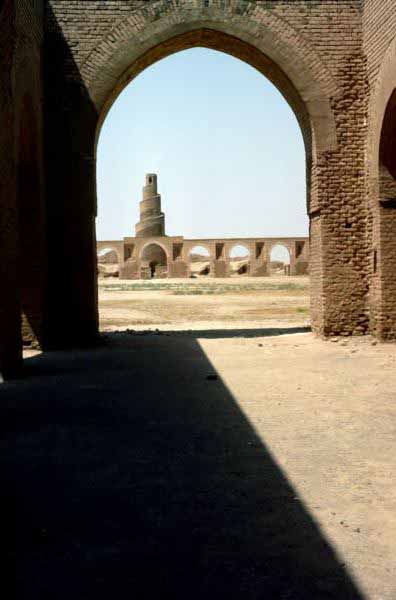 |
| Abu Duluf |
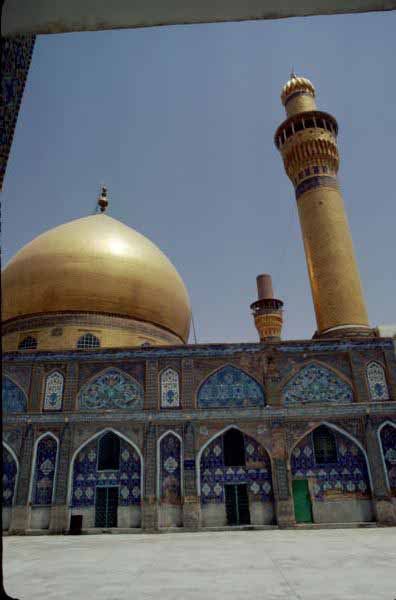 |
|
Askari |
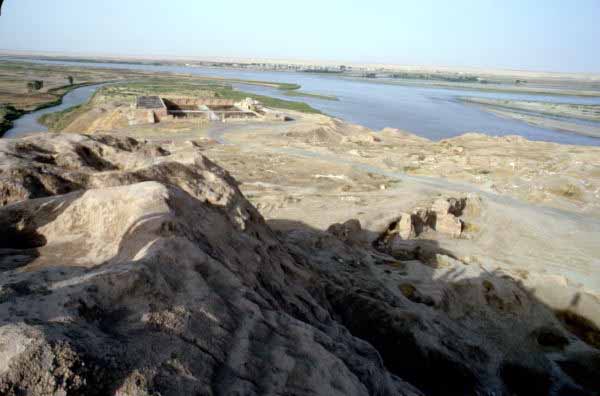 |
|
Assur |
|
|
|
|
|
|
On the way to Ashur we went through Tikrit, the stronghold of the Saddam
Hussein clan. The trip continued to Mosul. |
|
|
|
|
Mosul |
|
|
|
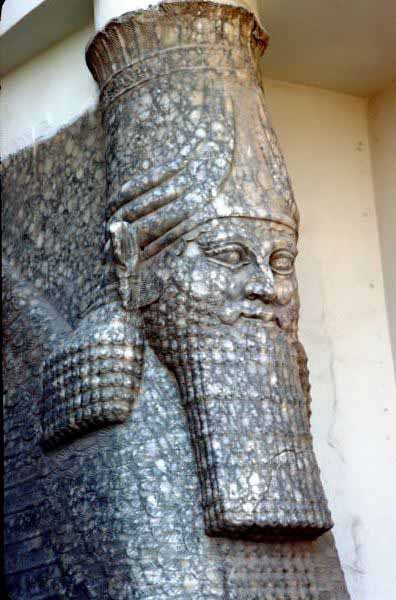 |
|
Ninive |
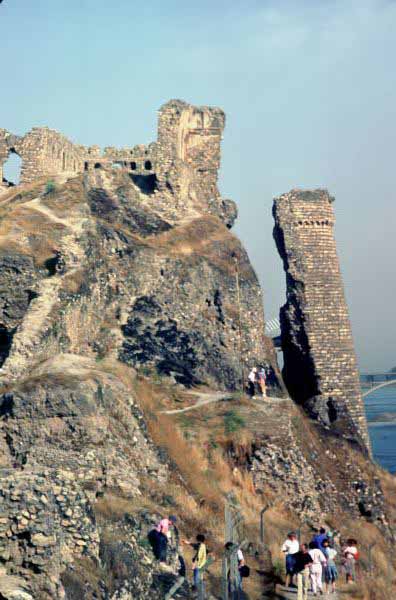 |
| Bash Tapia |
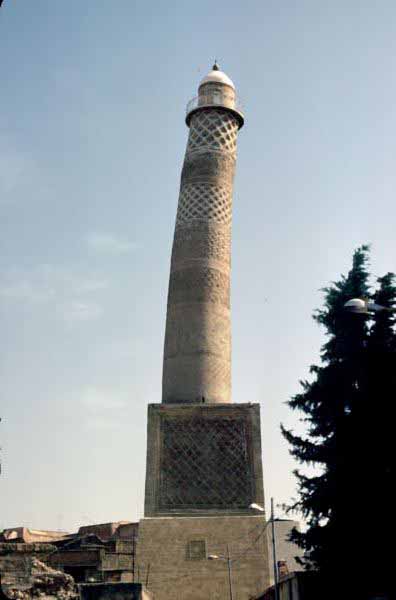 |
|
Nuri |
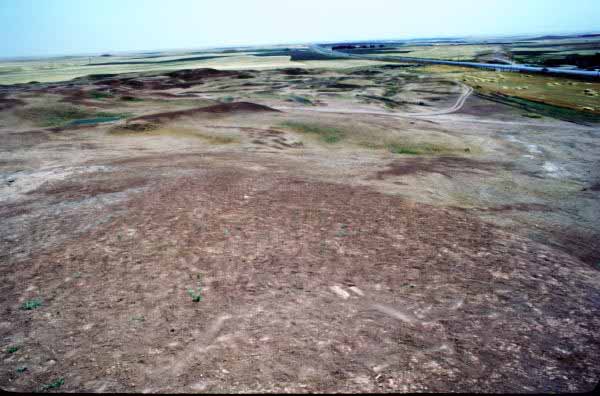 |
|
Korsabad |
 |
|
Nimroud |
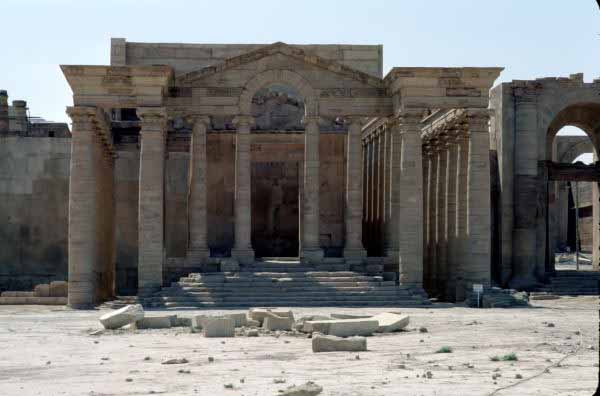 |
|
Hatra |
|
|
Approach: The city of Mosul was the starting base of excursions in the area.
We stayed two days there.
Nineveh: The city was the third capital of the Assyrian kingdom built on the
eastern bank of the Tiger. It is surrounded by a rampart with fifteen gates
bearing the names of Assyrian gods. The entrance is made through the Nergal
gate that has a small museum.
The Koyunjuk hill gathers the best preserved buildings, the
Sennacherib palace kept by lions and winged bulls, called Lamassu.
The majority of the sumptuous low-reliefs are in the British Museum.
The Assourbanipal palace had a library of several thousands
clay tablets with cuneiform writings.
The Nabi Younis hill has a mosque dedicated to Jonas.
Bash Tapia Citadel: It used to be part of the large Mosul wall which does
not exist any more. Only the imposing ruins of the citadel on the side of the Tiger.
The curved minaret of the Nuri mosque was built in 1172.
Saint Thomas church is one of the oldest in Mosul.
Museum of Mosul: It gathers a rich collection of artefacts of
ancient civilizations from the stone age to the Islam era.
Korsabad: The city was the fourth capital of the Assyrian kingdom, founded by
Sargon II (721-705 BC). It was not inhabited a very long time. Nothing is left but a
vast heap of raw bricks whose most remarkable elements are in the Museum of Le Louvre,
two Lamassi, or in the Museum of Baghdad.
Sheik Hadi: The "Rome of Yézidis" is the home of a mysterious sect
at the borders of Zoroastrism, Christianity and Islam. It perpetuates the worship
of Mazdean fire.
Al-Koch: The city has a very old Christian community and the monastery of the
"good harvests".
Nimrod: The city was the second capital of the Assyrian kingdom. It was famous well
before Salmaneser I (1273-1244 BC) made it the centre of his kingdom. The most
important kings were Assur-nasir-pall II (885-858 BC) and Salmaneser III (858-824 BC).
The ziggurat and the Assurnasirpal II palace were visited. The entrance of the palace
is flanked by two winged bulls with human heads. Foreign archaeologists have left
some sumptuous low-reliefs in place. Superb objects were discovered and are exposed in Baghdad.
The most remarkable is "the Mona Lisa of Nimrod" made of ivory (720 BC).
Mar Behnam: The city is also called Deir Al-Jubb "the cistern monastery".
It dates back from the 12th century AD. The tomb of St Bernard
has inscriptions in Syrian, Arabic and Mongolian.
Hatra: The Hatra kingdom was founded in 156 AD. The city was prosperous long before,
it was equal to the great caravan cities, Palmyra, Petra, Baalbek. The city was strengthened
by the Parthian empire. It was the capital of the first Arab kingdom. It resisted
the Roman empire twice in 116 and 198 AD. The Sassanian empire destroyed it in 250.
The vestiges of the city show the Greek, Roman and preislamic Arab architectural influences
and testify that cultural syncretism is possible!
The Great Temple: It is laid around a vast court occupying the three quarters
of the building and the sanctuaries preceded by iwans.
There are several other temples on the site. The inscriptions are in Palmyrean alphabet
and Aramean language. |
|
|
The entrance gate of the Assyrian palace was kept on both sides by Lamassi to protect men from
the devil and the forces of the evil. Lamassu is a fantastic composite creature, made of
a winged lion- or bull-figure with a human head. Some have five legs to give the illusion
to be moving. The term "orthostat" is also employed. |
|
|
|
|
|
|
|
Baghdad |
|
|
|
|
Approach: We arrived the day before and spent two days to visit the capital of Iraq.
We were driven out of our international standard hotel because the rooms were requisitioned
for an Arab summit. The events showed that it was the ultimate negotiation with Saddam Hussein:
The First Gulf War was launched a few months later.
The old city: The old city was visited on foot to wander through the ancient
streets. The following buildings were visited:
Abbasid palace: It may have been built by Caliph Al-Nasser Lidinillah (1179-1225).
Partially restored, it has a very balanced beautiful architecture with a vast yard surrounded
by two floored buildings and a remarkable iwan with a ceiling and a frontage made of bricks.
Arabesques cover the walls.
Mustansiriya madrassa: The whole of the buildings corresponds
to a multi-field university campus which it said to be the most renowned in
the Islamic world of the Abbasid time. The rectangular brick building is
decorated with geometrical drawings and the entrance gate with Koran verses.
Khan Murjan caravanserai: This was the place where caravaneers had rest and
provided incomes to the Koran schools. It is built in rotunda on a large central hall.
The rooms give onto the hall and are accessible by a staircase giving on a gangway set
on brick arcades.
Aqargouf: The city was founded by king Kurigalzu in the 15th century BC on
the Sumero-Babylonian plan. Most of the ziggurat, 57 meters high, is destroyed.
The structure of the core is perfectly visible by the clay-brick
fitting. The site has vestiges of temples and palaces.
Ctésiphon: The site has a great historical importance. The city was founded
by Seleucos Ist (358-281 BC), who was one of Alexander the Great's lieutenants.
In the middle of the site, a splendid arch built out of brick stands up majestically
in a ruined site, it is only the iwan left in the royal palace.
Holy Places: The city of Baghdad has many
tombs and mosques. We visited the Sitt Zumurrud Khatoun tomb
and the Sheik Omar Al-Sahrawardi sanctuary.
Ramparts and Gates: In 762 AD, Al-Mansur built Baghdad on a circular plan
with ramparts and gates to ensure its defence. The only gate which remains nowadays is
that of Dhafariya. The gate tower is +14 meters high and covered by an octagonal dome.
The place is partially in ruin.
The Museum of Iraq: The museum has rich collections covering all the period
of history from Mesopotamia to our days.
The events of Gulf War II have shown that the rooms were emptied of their historical
contents by plunderers probably working for collectors! |
|
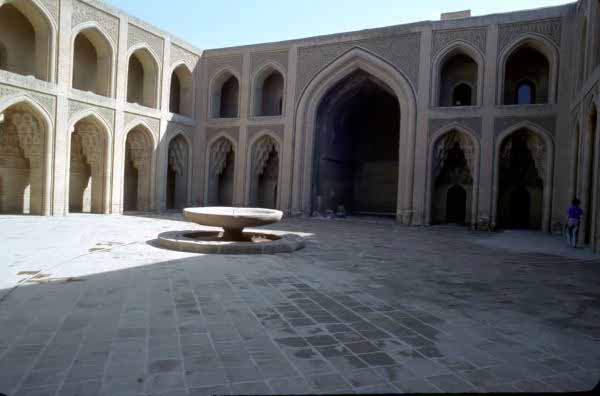 |
|
Abbasside palace |
 |
| Mustansiriya |
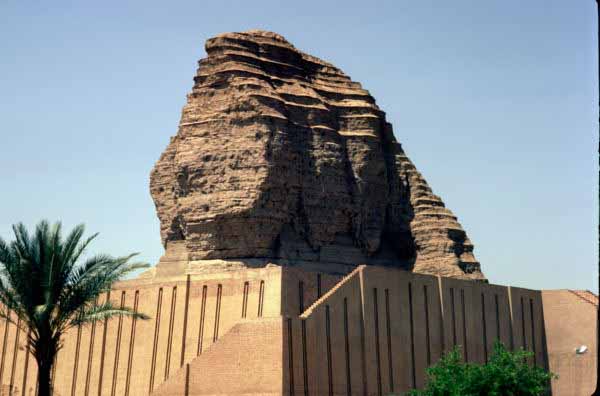 |
|
Agargouf |
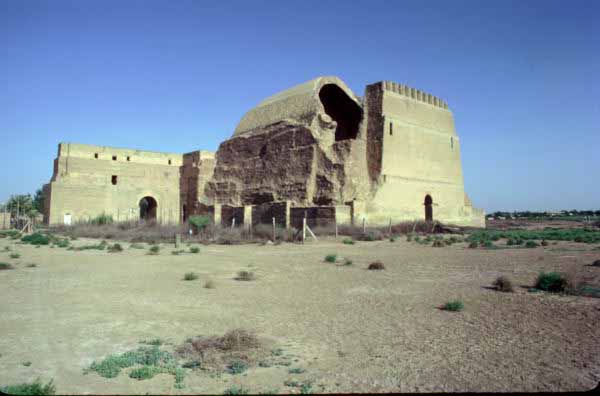 |
|
Ctésiphon |
 |
|
Museum of Iraq |
|
|
|
|
|
|
The journey to Iraq showed me all that humanity owes to Sumero-Akkadian
civilization, the cuneiform writings which made it possible to inscribe
facts on clay tablets. Several thousands of these tablets were found
both in Iraq and in Syria.
Their study helped to know Mesopotamia. Thus Samuel Noah Kramer could give
entitle one of his works: "History begins at Sumer". Jean Bottero in "
Writing, reason and the gods" tells us that the first elements monotheism
were in gestation in the kingdom of Sumer.
The oldest book in the world is surely not the Bible, but the Sumerian tablets inscribed
with cuneiform writings, the epopic of Gilgamesh, the Poem of Supersage... which were
plagiarized by nomads of the fertile crescent to write their history... a posteriori
|
|
|
|
|
The return to France was made, by an Air France flight via Istanbul, with departure
in the morning and arrival early in the afternoon. |
|
|
|
| Neuilly, le 2003/11/30 |
|
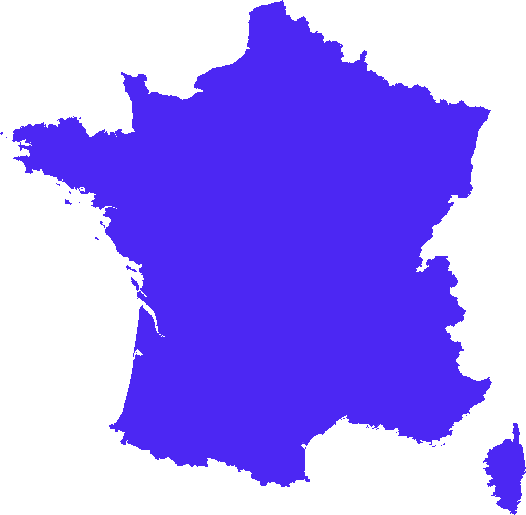
|
|
|
|
|